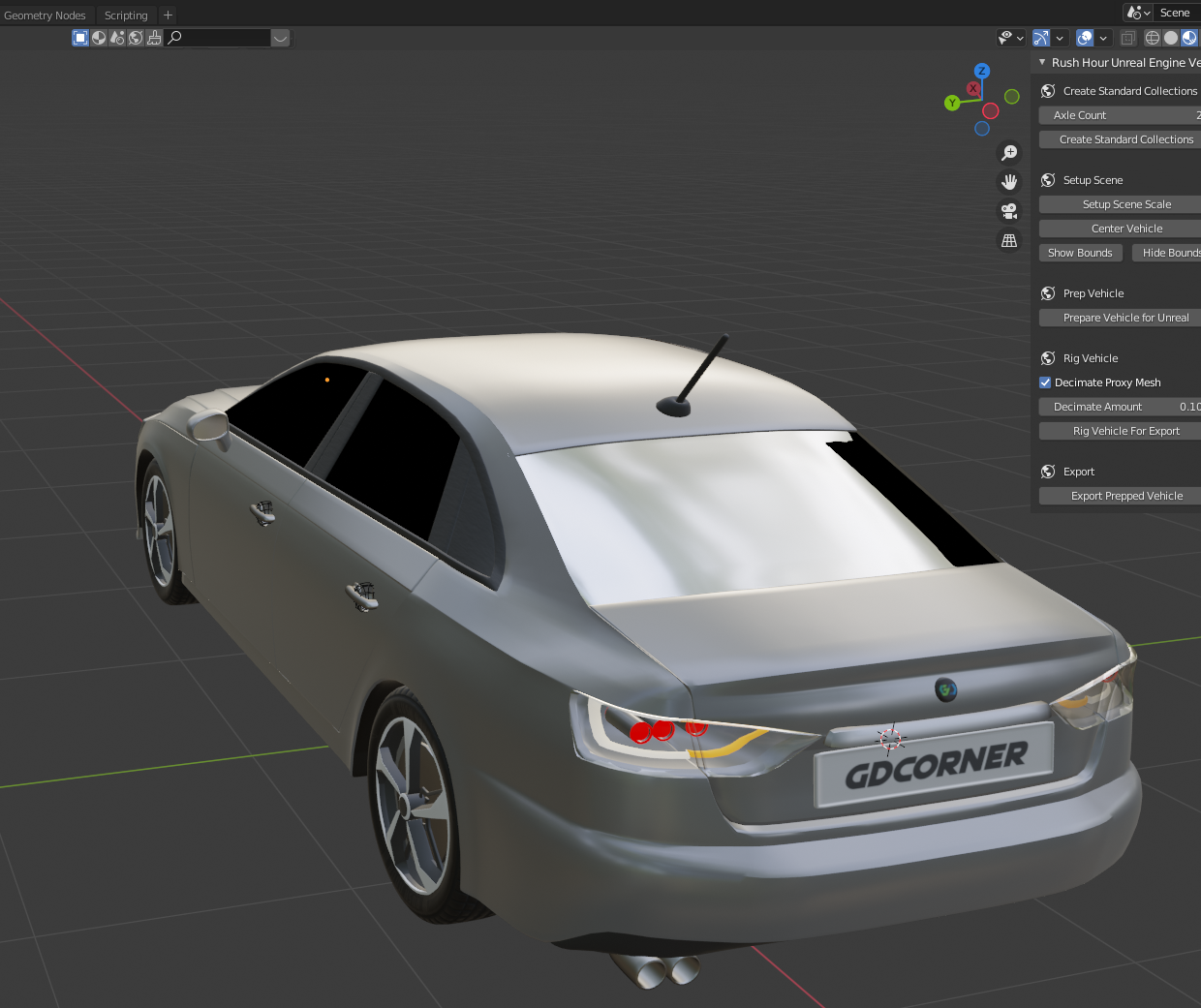Vehicle Model Requirements
There are a few requirements for your vehicle before we start using the Rush Hour Vehicle Toolkit for Blender. This article attempts to outline some of the assumptions and requirements.
The addon will try and compensate for some of these problems, but it’s more reliable if you address these manually.
Support Note The Rush Hour Vehicle Toolkit Blender Addon assumes that you have a relatively clean, well-prepared model, or that you have the working knowledge of Blender to fix your source models. For convenience I have provided some instructions on simple fixes for common issues here, but model clean up and general Blender instructions are beyond the scope of Rush Hour, the Vehicle Toolkit, and GDCorner support. If you need more assistance on cleaning up a vehicle model, you’ll need to contact someone more familiar with modelling tools.
Vehicle Orientation
- Ensure your vehicle is facing so the front is looking down the
+Xaxis, and+Yis left.

Mesh Requirements
- Ensure all your geometry parts are separate meshes
- The wheels are required to be separate meshes from the body for rigging
- If you are going to be using tyre deformation, or need your brake calipers to be correct you should ensure the wheels are separated appropriately.
- Any transparent objects are separated if using nanite
- The windows are separated by interior and exterior to avoid z-fighting issues and avoid windows drawing in the wrong order in Unreal.
- Ensure all your normals are facing the correct way with the face orientation overlay
- Ensure you aren’t using negative scales on any meshes.
- If you have negative scales, apply the transforms on the meshes
- Apply Transforms
- There is no parent relationship between objects, and the transforms are not relative
- Wheels can’t have any camber/slant. This will cause the appearance of wobbling wheels.